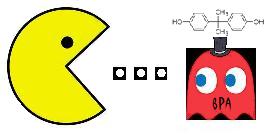Team:Caltech
From 2011.igem.org
| Line 32: | Line 32: | ||
<br><center>[[Team:Caltech| <font face="verdana" style="color:#BB4400"> '''Home''' </font>]] <br><br> | <br><center>[[Team:Caltech| <font face="verdana" style="color:#BB4400"> '''Home''' </font>]] <br><br> | ||
[[Team:Caltech/Project | <font face="verdana" style="color:#BB4400"> '''Project''' </font>]] <br><br> | [[Team:Caltech/Project | <font face="verdana" style="color:#BB4400"> '''Project''' </font>]] <br><br> | ||
| - | [[Team:Caltech/ | + | [[Team:Caltech/Data | <font face="verdana" style="color:#BB4400"> '''Data''' </font>]] <br><br> |
[[Team:Caltech/Parts | <font face="verdana" style="color:#BB4400"> '''Parts''' </font>]] <br><br> | [[Team:Caltech/Parts | <font face="verdana" style="color:#BB4400"> '''Parts''' </font>]] <br><br> | ||
| + | [[Team:Caltech/Team | <font face="verdana" style="color:#BB4400"> '''Team''' </font>]] <br><br> | ||
[[Team:Caltech/Notebook | <font face="verdana" style="color:#BB4400"> '''Notebook''' </font>]] <br><br> | [[Team:Caltech/Notebook | <font face="verdana" style="color:#BB4400"> '''Notebook''' </font>]] <br><br> | ||
[[Team:Caltech/Biosafety | <font face="verdana" style="color:#BB4400"> '''Biosafety''' </font>]] <br><br> | [[Team:Caltech/Biosafety | <font face="verdana" style="color:#BB4400"> '''Biosafety''' </font>]] <br><br> | ||
Revision as of 08:18, 28 September 2011
|
Project |
We are the Caltech 2011 iGEM Team. We are interested in the bioremediation of endocrine-disrupting chemicals in bodies of water. Endocrine-disrupting chemicals are substances which detrimentally effect the development and reproduction of wild organisms. These chemicals mimic natural biological estrogen in their interaction with animal estrogen receptors. This interaction has negative effects for reproductive processes of several species of fish and birds. To remedy that, the Caltech iGEM team hopes to engineer bacteria which can degrade DDT, synthetic estrogen (17a-ethynylestradiol), bisphenol A, and nonylphenol to less toxic forms. Compared to traditional forms of pollution removal, bioremediation is relatively cheaper and less disruptive to the environment. However, a successful project must make sure that the bacteria used for remediation do not act as pollutants or introduce toxic byproducts into the environment.
|
 "
"


